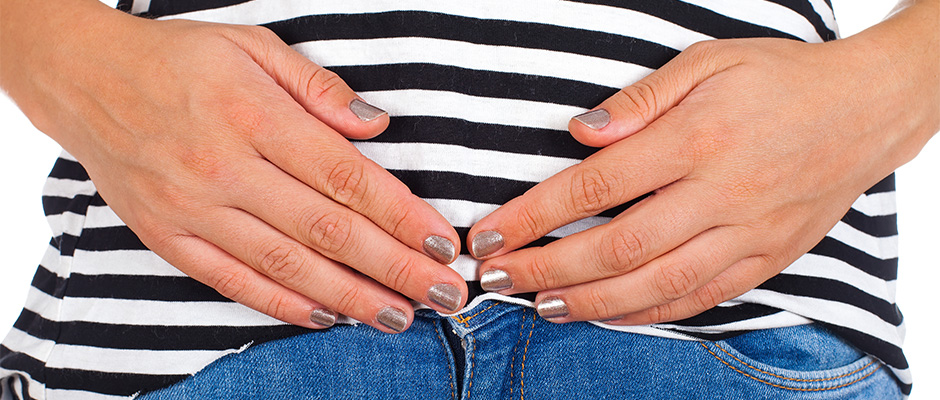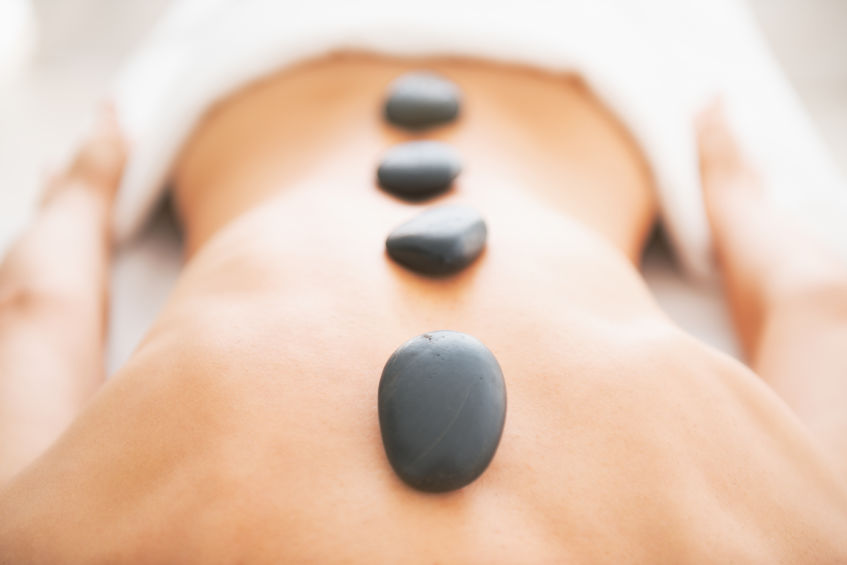
Like everything else with endometriosis, severe bloating, also known as “endo belly” can be complex and varied from person to person. This “endo baby bump” is often painful and uncomfortable, and can take a toll on self-image.
According to Amanda Malachesky, a Functional Nutrition Practitioner, owner of Confluence Nutrition, and longtime endometriosis patient, there are two primary reasons for bloating with endometriosis. “[Endometriosis] causes scar tissue that can bind up the abdominal organs and slow down the intestines,” she explains. “The second [reason] is that the endometriosis lesions can flare at different parts of the menstrual cycle, which can cause an immune response, which includes swelling.”
Sound familiar? Here are twelve tips to help you beat the endo belly bloat battle--and win:
-
Make sure it isn’t “just” endo belly.
Several diseases and conditions are marked by severe swelling. Malachesky added that women with endo are more prone to Small Intestinal Bacterial Overgrowth (SIBO), which is often characterized by painful bloating, constipation, and painful bowel movements. Fibroids or cysts may also lead to bloating.
-
Track everything, daily.
Diligently tracking bloating triggers helps hone in on a source. Log food and water intake and sleep. Apps like Glow and Fitbit log menstrual cycles and related symptoms: Such documentation helps identify patterns and may be instrumental in diagnosis, care planning, and medical visits.
-
Check your gut.
When it comes to endo belly, diet and gut health is an essential component to explore. The “endo diet” or an anti-inflammatory diet are regularly recommended to endo patients: These diets generally eliminate alcohol, gluten, dairy, eggs, soy, red meat, preservatives, artificial sugars, and caffeine.
Women's social media support groups also share positive experiences with the keto diet and low-carb plans while others have found solace in kombucha, kimchi, kefir, or fresh ginger. “Another major game-changer is drinking celery juice first thing in the morning,” shared Holly M. on Facebook. “Preferably fresh, but that’s not always possible.”
Heather C. Guidone, BCPA, Surgical Program Director for The Center for Endometriosis Care, also noted the FODMAP diet. FODMAP is short for — fermentable oligo-, di-, monosaccharides, and polyols — which are short-chain carbohydrates that increase liquid and gas volumes in the intestine which may lead to abdominal pain, gas, and bloating “The FODMAP diet demonstrated in some studies as highly effective at reducing symptoms in patients who have both endometriosis and IBS (Jankowitz, Watkins 2017; Moore et al. 2017).”

-
Move & massage.
“Many people are afraid to workout when they are in pain, but exercising over time will actually decrease your pain,” says Caleb Backe, Health & Wellness Expert for mapleholistics.com.
“It will help with the circulation of your blood, reduce stress, and maintain nutrient and oxygen flow to your whole body.”
Fiona Gilbert, biohacker and wellness advocate adds “gentle twisting motions will aid in circulation and movement through the abdominal region. It helps with pain as well as bloating.”
A quick stroll before bedtime or a belly massage can help move food down the digestive tract and reduce bloating.
-
Check your hormones.
“Because endometriosis is partly due to a hormonal imbalance, keeping blood sugars balanced will help support proper hormone balance,” notes Malachesky. An appointment with an endocrinologist or nutritionist might be in order.
As The Blossom previously reported, acupuncture may help balance hormones. “From a hormonal balance standpoint, acupuncture has also been found to release norepinephrine and put us in a state of rest and digest, which is when our body can begin healing itself,” explained acupuncturist, Meghan Van Dina.
https://www.endofound.org/endo-have-you-on-pins-and-needles-an-acupuncturist-may-have-your-answer
-
Get herbal and supplemental.
Malachevsky recommends a magnesium supplement (for assistance with pain and inflammation), B complex, and fish oil. Gilbert is a fan of herbal tinctures and teaches her clients how to make their own: “For endo and endo-belly, I love a mixture of manjistha, ashwaghanda, ginger, and lavender. Manjistha promotes gentle circulation and lymphatic circulation. Ashwaghanda is an adaptogen that aids with anxiety and anti-inflammation. Ginger is an amazing painkiller as well as anti-inflammatory. Lavender is a relaxant. This will all help with sleep as well as general stress and anxiety. My favorite supplement is GlutAleoMine by Xymogen to help with gut repair and healing.”
Endo support groups also sing praises for daily probiotics.
-
Get oily.
Essential oils are big go-to for many bloated women, particularly peppermint (ingested with water), primrose, and The Blossom dissected CBD oil.
https://www.endofound.org/cbd-oil-for-endometriosis-pain-experts-warn-buyer-beware
-
Get your sleep.
The body repairs itself during deep sleep. Sleep deprivation can cause hormonal and metabolic changes and increase pain and stress responses (and thus bloating), and women with endo often struggle with insomnia. Popular sleep inducing recommendations include lavender scents, blue light phone filters in the evenings, eliminating electronics after a certain time, and chamomile teas.

-
Eat mindfully.
Nutritionists and wellness advocates alike recommend mindful eating, which includes sitting upright at the table for meals and undistracted consumption with thorough chewing: All of this helps support digestion, reduce bloating risk, and strengthen the mind-body connection.
-
Relax the pelvic floor.
“The pain from endo ends up making the entire pelvic floor contract and become hypertonic,“ says Gilbert. “[Relaxing the pelvic floor] through a combination of deep belly breathing and yoga wall exercises, stopping and starting the urine stream for pelvic control, and some OBGYNs also encourage women to explore their pelvic region through masturbation. The mechanics of an orgasm is contraction followed by relaxation of the pelvic floor.”
-
Limit the stress.
Limiting stress is a tall order. Stress fuels endometriosis and its symptoms, and endometriosis create physical and mental stress, so the cycle needs to be slowed as much as possible. The Blossom featured these stress management tips. In addition, breathing exercises, physical and emotional therapy, and exercise have been essential for many endo women.
https://www.endofound.org/managing-stress-self-care-for-endometriosis
-
Find a self-care routine and stick to it.
“Keep in mind this takes work but in the long run you will be healthier for it and have a way of combating stress overall.” Says Dr. Goldstein. Once you discover what works for you, setting personal boundaries and a non-negotiable self-care routine will keep the bloating and endometriosis symptoms at bay.









